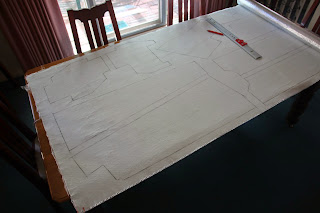
Once I had all the cutting out done I then numbered each part for identification purposes so they wouldn't get mixed up. I cut about 8mm inside the line to give plenty of area to seal the glass fibres. Next I used Selleys Silicone 401 Industrial Grade Adhesive and spread a reasonable thin film over the insulation prior to fitting to the chassis. The reason for using the Selleys product is that it is a strong adhesive that can be used on most surfaces and can withstand high temperatures up to 205c continuously. Another good thing about this product is that you have a bit of time to make adjustments or reposition if required..
Once the silicone adhesive has dried, I went over all the edges with Parfix Roof, Gutter and Concrete Silicone Sealant to stop any fraying of the insulation. The Parfix remains highly flexible and will also withstand heat up to 160c.
Once the fibreglass insulation is fitted, pre-cut polished stainless steel heat shields are screwed in place to cover the insulation. Holes are drilled and tapped through the insulation and into the chassis and stainless screws are fitted using 4mm spacers on the screws between the heat shield and insulation to create an air gap.

Now that the fire wall is finished I can go ahead and assemble and fit the pedal box and brake lines.
Until next time,
Cheers
Russell

